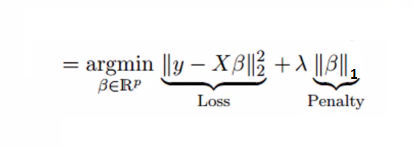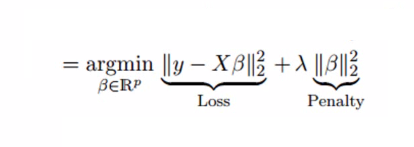We want to have a minimal number of eatures that it takes to really capture the trends and patterns of our data.
*NOTE:
Features != Information
Why do we do Feature Selection?
- It enables the machine learning algorithm to train faster.
- It reduces the complexity of a model and makes it easier to interpret.
- It improves the accuracy of a model if the right subset is chosen.
- This is the method for automatically penalizing extra features.
- It can set the coefficient of a feature to zero.
There are some pre-defined modules/libraries in sklearn that helps us in Reglarization/Feature Selection.
- Lasso Regression
- Ridge Regression
- Elasric-Net Regularization
- In Lasso Regression, we add Mean Absolute Value of coefficients.
- Lasso regression can completely eliminate the variable by reducing its coefficient value to 0.
- The new term we added to Ordinary Least Square(OLS) is called L1 Regularization.
https://scikit-learn.org/stable/modules/generated/sklearn.linear_model.Lasso.html
- In Ridge Regression, we add Mean Square Values of coefficients.
- This term is the sum of squares of coefficient multiplied by the parameter.
- The motive of adding this term is to penalize the variable corresponding to that coefficient not very much correlated to the target variable.
https://scikit-learn.org/stable/modules/generated/sklearn.linear_model.Ridge.html
- ElasticNet is hybrid of Lasso and Ridge Regression techniques.
- It is trained with L1 and L2 prior as regularizer.
- Elastic-net is useful when there are multiple features which are correlated. Lasso is likely to pick one of these at random, while elastic-net is likely to pick both.
https://scikit-learn.org/stable/modules/generated/sklearn.linear_model.ElasticNet.html





